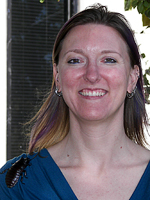 Tent Caterpillars Start to Appear in April
Tent Caterpillars Start to Appear in April
Forest tent caterpillars cause damage in the larval, or caterpillar, stage. Caterpillars are a greyish- brown color with bright blue and yellow stripes running down the sides of their body. The back of the caterpillar has white shoeprint/ keyhole markings. Larvae also have fine white hairs over their body but are not a stinging caterpillar.
These caterpillars, although called tent caterpillars, do not make an actual tent like others in their group. Other tent caterpillars make a web between two branches where they join or split from each other. Forest tent caterpillars make a silken mat on the tree trunk or large branches where caterpillars gather in groups between feedings.
Forest tent caterpillars appear once a year, typically in April. In some years outbreak populations can occur and numerous caterpillars can be seen in certain areas. They chew foliage of trees, usually deciduous hardwoods. Even though the caterpillars eat foliage, many trees can withstand 20% loss of foliage without being harmed. Concern should be when other stressors are apparent along with the caterpillars, such as drought or disease.
Treatment Options
If the need to manage forest tent caterpillars occurs, less toxic active ingredients that can be used to treat foliage are Bacillus thuringiensis (Bt) kurstaki or spinosad. Another option would be to treat the silken mat with a pyrethroid product when the caterpillars are resting there.
For more information or help with identification, contact Wizzie Brown, Texas AgriLife Extension Service Program Specialist at 512.854.9600.
About Wizzie

Wizzie Brown
County Extension Program Specialist – Integrated Pest Management
Email:EBrown@ag.tamu.edu
Wizzie has been with Texas A&M AgriLife Extension Service since 2002 and has been playing with insects since she was a toddler. She is an Extension Program Specialist with the Integrated Pest Management (IPM) program. Wizzie holds a B.S. in entomology from The Ohio State University and a M.S. in entomology from Texas A&M University. The integrated pest management program provides identification, biological and management information to whomever needs help. Wizzie’s research focuses on imported fire ants, including community wide fire ant management. Wizzie also is happy to provide programs to area groups on a variety of arthropod-related topics. You can find insect and other arthropod information on Wizzie’s blog.

